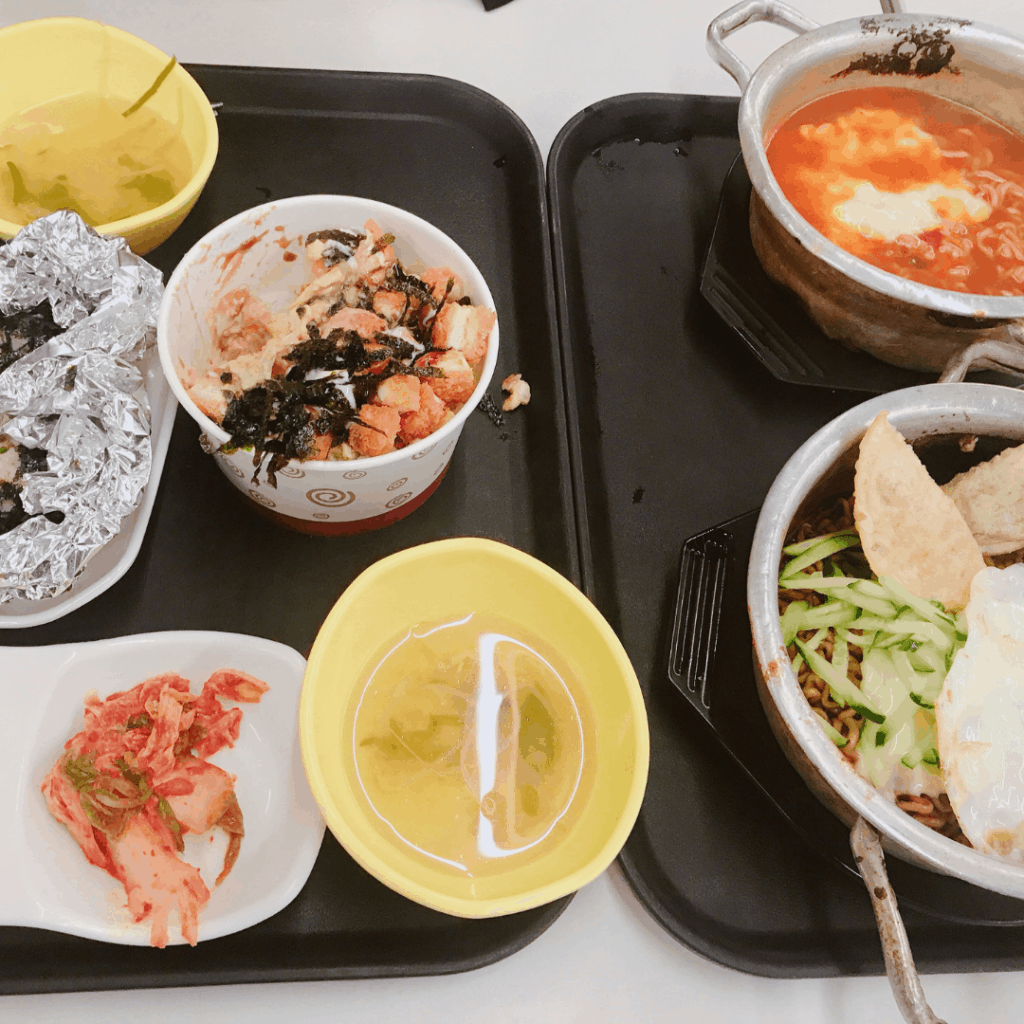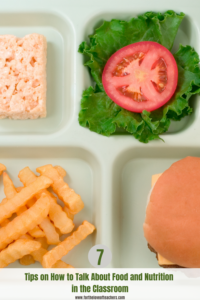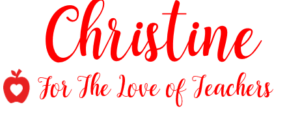
Did you know that in the U.S., a child is 242 times more likely to have an eating disorder than type 2 diabetes!? Yet on the news, we hear so much more about kids’ weight “issues” and risk of diabetes than eating disorders.
Weight stigma is so prevalent and ingrained in our society that our kids are headed towards a road of eating disorders and disordered eating. The enormous attention that has been given to “weight control” in the name of “health” plus the sociocultural idealization of thinness can cause a child to fear weight gain, be “unhealthy,” or be discriminated against.
The way a child’s grown-ups talk about food and bodies makes a huge impact on their relationship with food, how they eat, and how they view their body. Maybe you can think back to your childhood and reflect on some influential moments that impacted how you view food and your body to this day. I know I sure can! I can vividly remember things said by my parents, sister, teachers, friends’ parents, coaches, etc. who collectively shaped my outlook on food and body, both positively and negatively.
Our thoughts and feelings about weight and health are heavily influenced by the diet culture we live in, and no one is immune to it. But with awareness and education, we can choose our language and actions around food, nutrition, and health more carefully so we are doing more good than harm to the physical and mental health of our youth.
Have you ever wondered if your food and nutrition lessons are age-appropriate or promoting the right messages? You’re not alone if you have and it’s worth taking a thorough examination.
I just want to say that I know teachers wear a million hats, and I respect every single thing you do for our kids. Especially this past year during the Covid-19 pandemic. Believe me, I’ve been thinking about you and I sincerely could not do what you do. I also do not expect you to be a nutrition expert – that’s what registered dietitians are for! And I’m not an expert in childhood education, so collaboration is definitely needed here! I hope these tips can help you get curious about your food and nutrition lessons in your classroom and I’d love to learn more from you, too.
So, here are some of my top tips on talking about food/nutrition in the classroom to promote a healthy relationship with food and body.
1. Create a food neutral classroom

Food neutrality is believing that all food is morally equal and removing judgment of food. So instead of describing food as “good” vs. “bad” or “healthy” vs. “unhealthy” for example, I encourage you to challenge your thoughts around phrases like these and adopt a more neutral language. Although a particular food may offer less nutrition than another, it may also offer pleasure and satisfaction which is an important part of the eating experience. All foods can fit into a healthful diet, so there’s no need to bash foods. This just causes confusion and anxiety for kids (and adults too for that matter).
Other words that are often used to describe food that can hinder a healthy relationship with food include:
- Clean/dirty
- Skinny/fattening
- Guilt-free
- Junk
- Empty calories
Words you can replace them with:
- Nourishing
- Energizing
- Satisfying
- Energy-providing
- Nutrient-dense/rich
- Delicious
- Enjoyable or Joy-bringing
- Fun
We can always find something positive to say about any food, whether it’s an apple, cookies, carrots, or cookie. An apple is crunchy, sweet, and gives us energy. A cookie is sweet, gives us a quick burst of energy, and brings us pleasure.
2. Encourage kids to eat intuitively

Children are born with the capability to eat as much as they need to grow into the body that is right for them. We need to instill their intuitive eating skills by:
- Creating a positive, pressure-free environment around eating and trying new foods
- Encouraging them to listen to their bodies to tell when they are hungry and comfortably full, as well as satisfied or not quite yet.
*Note: Intuitive eating is a privilege. Kids who are food insecure don’t necessarily have the ability to eat as much as they want of the food they want.
3. Maintain a positive eating environment without judgment or criticism

When you’re around students while eating, don’t comment on how or what you think the child should or should not be eating. Once the food is served, it’s up to the child to decide whether and what to eat or not eat. This means it’s okay for them to eat the dessert first, in the middle, or last. Kids figure out how to become competent eaters when they are exposed to a variety of foods, not pressured, and have good role models.
4. Keep diet culture out of lesson plans
If you create a lesson around food, stray away from promoting calorie counting and food comparisons (like “healthy vs. unhealthy;” “red light, green light”; “high calorie vs. low calorie,” etc). For example, if you are doing a lesson around holiday food, perhaps you just talk about what food their family enjoys for a particular holiday and celebrate different cultures.

5. Don’t teach kids adult jobs
Oftentimes, school nutrition lessons teach kids about nutrition principles and expect that they will apply these to their food choices. First of all, kids aren’t doing the grocery shopping, so these expectations are unrealistic. Secondly, young kids can not think abstractly about nutrition. They won’t be able to understand concepts such as “eat a variety of foods.” It can also lead to very black and white thinking about food, which can cause anxiety and fear around food and eating. Before age 11-12, it really needs to be about pressure-free experiences with food (such as naming, seeing, touching, sorting, smelling, preparing, tasting, and eating). It should also be about behavior around food (how to approach trying new foods, taking permission to eat enough, sanitation, table manners, courtesy, and cultural respect).
After about age 13, lessons can become more abstract, but they still shouldn’t be about teaching food and nutrition rules such as “eat this, not that.”
Some other ideas for lessons:
- Where foods grow and come from
- How food is made or prepared
- How to read a recipe
- Recognizing hunger and fullness cues
- Foods that are in season or grow regionally
6. Create an environment where all bodies are good bodies

Do not weigh kids in class, make comments about a child’s weight or your own weight, compare a child’s weight to another, praise a child for being thin or losing weight, speak negatively about those in larger bodies or praise others for weight loss. All bodies are good bodies and deserve dignity and respect.
7. Promote joyful movement

Encourage physical activity that is fun and makes them feel good- not for burning calories or changing the size/shape of their body. Movement that is fun for kids includes games, activities, and sports that they enjoy. If you talk about the things you like to do for physical activity, talk about it in this way as well.
To learn more about nutrition education in schools, I highly recommend reading the following article by Ellyn Satter:
Secrets of Feeding a Healthy Family Appendix H: Nutrition Education in the Schools
I also recommend @dietitians4teachers on Instagram as a very helpful resource!!
About the author: 
Jackie Rogers is a Registered Dietitian, Online Nutrition Coach, and founder of The Knowledge to Nourish. She teaches parents how to feed and nourish their babies and kids WITHOUT the stress so they can grow up with body trust, health, and vitality! She also helps parents break away from diet culture and heal their relationship with food and body through the principles of Intuitive Eating. You can find Jackie on Instagram @jackierogers_rd. You can also join her free Facebook group The Knowledge to Nourish Parent Community.
If you like it, then pin it!

Thanks for reading!


Christine Weis is a passionate educator, classroom management coach, wife, and mom of two busy boys. She enjoys teaching, writing, and creating resources for teachers.




“Create a food neutral classroom” is such a great idea! I could actually try, once the school and class outreaches resume.
Interesting post and those are some great tips to keep in mind. It’s good to start teaching them to eat healthily young.
We truly need to influence or approach kids in the right way.. I am not a mom but I agree that all the tips are helpful in here.
Though I don’t have a child, this post was soo sooo interesting for me. You’re absolutely right, all the tips are helpful. We have to approach to the children in the right way.
Great tips! I think integrating nutrition and healthy foods in class is a must! It teaches children to be healthier and gear towards healthy lifestyle choices.
I am going to share this post with my daughter. My grandson is such a picky eater. It is difficult for us to make him to try new food. I believe encouraging a positive environment when it comes to meal times would be a good idea.
It is good to establish a good basis for healthy eating in kids. These all sound like wonderful approaches.
I never liked words like “junk” and “fattening” when describing food. These terms were commonplace in the past. It’s good that their use is fading.
This is a wealth of information! I’m so happy I found this article — I’ve learned a great deal from it.
I love the replacement words for foods and eating. It’s so important to educate our kids about healthy eating and habits. I always educate my children at home and truly appreciate the support from their teachers as well. Great article, thanks for sharing this!
Such great things to do inside the classroom to promote food nutrition among students. Definitely, a wonderful initiative to help students in bringing up the essential stuff that students need to know.
You always give such good advice on how to reach out to kids, and as usual, I think that your tips can be translated into any subject, not just food-related. Even though I believe that some of our young once need the information about nutrients.
Those are all great ideas. I wish our daycare was good about that too.
These are great tips. I really like the idea of keeping the wording used for food on a positive side. It’s important for kids to understand what healthy food is, but labeling foods as good and bad can create a bad food association.
I would love for my kids to learn these things at home too!